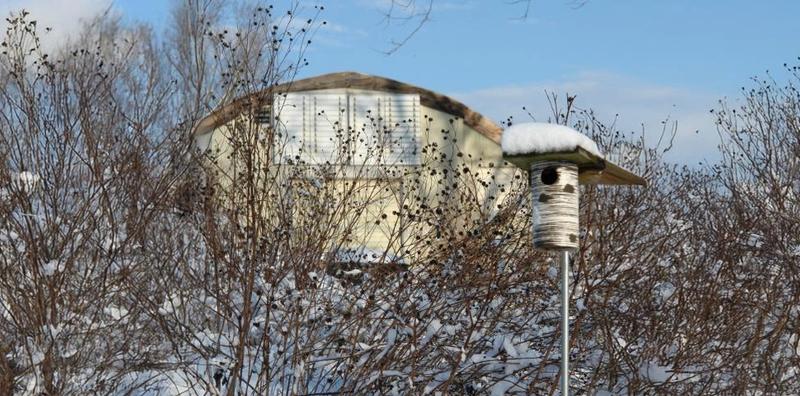Timing Cutbacks
Are you in the middle of winter season cutbacks? Haven’t started? Already done? How do you and your team determine when is the right time to perform cutting back the previous season’s growth? In January, we’d like to make the case for waiting patiently on your winter cutbacks. We’ve all heard about maintaining interest in the garden during the bleak winter months, but there’s more going on than first glance.
The Case for Holding Back
Winter Protection
A number of perennials folks who commonly cut back early would prefer a bit of winter cover, at least until the hard freezes pass. Plants from more arid climates like Penstemon from out west or shrubby Salvia and Agastache that originate from further south into Mexico can take the winter cold but don’t like the winter wet. Leaving their stems up through the winter provides additional winter protection and increases their chances of surviving year to year in areas outside their typical growing range. Leave standing over winter and prune top 1/3rd or half when lower leaf buds begin to swell in spring, signaling the plant has successfully made it. Leaving last year’s growth is an easy way to increase winter survival chances while easing off-season workload.
Hellebores weather sub-freezing temperatures with ease. But in cold climates, leaving hellebore foliage into early spring protects the flowers from frost damage resulting in better and cleaner blooms (Read more about how to cutback Hellebores here). Both leaves and flower stems can take unexpected winter freezes and piles of snow but both foliage and stem endure better with a bit of protection during the worst of it.
Soil Care
Keeping cover of the soil over the winter by planting green mulch, leaving the leaves, and holding off on removing winter kill top growth helps keep the soil healthy. Meanwhile, walking on soft, wet soil in the winter to cut back plants decreases soil porosity and increases soil compaction. Best practice is to wait for either dry soil conditions or a hard freeze to perform cutbacks as a way to protect the soil porosity during the winter. Additionally, leaving top growth through the cold months provides cover from hard winter rains that erode topsoil. When you work hard to test the soil and select the right plants for the location, taking care to minimize unnecessary disturbance and removal of organic matter goes a long way in stewarding soil health.
Animal Habitat and Food
The winter season is a lean time for animals active in the cold. Standing plant matter gives shelter to wild birds and small mammals for protection during the day as they look for food and is an insulator to soften the cold winds at night. The seed heads of native plants provide sustenance to tide animals through to the next season. Insects burrow themselves into fallen leaves and into dead stems to hibernate. In the same square footage, you could be keeping dozens of species alive for the winter as compared to a mown lawn or cleared garden bed. If your client enjoys life in the garden to alleviate winter doldrums, keeping the perennial stems and grasses up will provide a winter playground for all creatures, great and small.
The North Creek Way
The reality is it’s difficult to balance the needs of all-season labor hours, spreading jobs out to avoid spring rush, and supporting the ecosystem. Each team must determine what is appropriate for their circumstances.
Here at North Creek, we busy ourselves with running experiments or helping other departments in early and mid-winter before we begin the process of cutting back our acres in February into March. Trial and evaluation areas usually receive the earliest cutbacks alongside our large hellebore testing areas, then we work outwards, eventually to the wild environs of our bioswales and meadows. There are areas we experiment with leaving up, year to year, to see how the growth changes and how the planting reacts to different disturbance patterns. If possible, that may be a route your team might want to try. Annual cutbacks of plant material are essentially a human conceit, the plants don’t require it for their survival. Disturbance patterns, whether it’s a cutback in the dormant season or the growing season, a controlled burn, selective herbicide application, or by other means, can result in encouraging of certain species and the loss of others. We like to think that gardening with native plants is all a grand experiment and there’s no one way to do things. But if you have the ability, we encourage patience in cutting back last year’s growth. The plants, the soil, and the wildlife will thank you.
More articles on winter in the garden:
Winter Seedheads: a marriage between beauty and utility
Seedheads, Nature’s Original Birdfeeders
Last Man Standing - What plants are still standing in March
20 Native Evergreen Forbs for Winter Interest
Hold Your Ground: Utilizing Evergreen Basal Clumps for Soil Health and Beauty
Evergreen Native Groundcovers as Living Mulch


